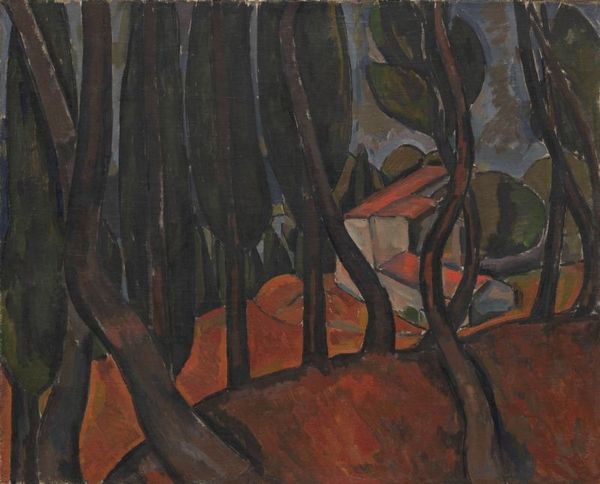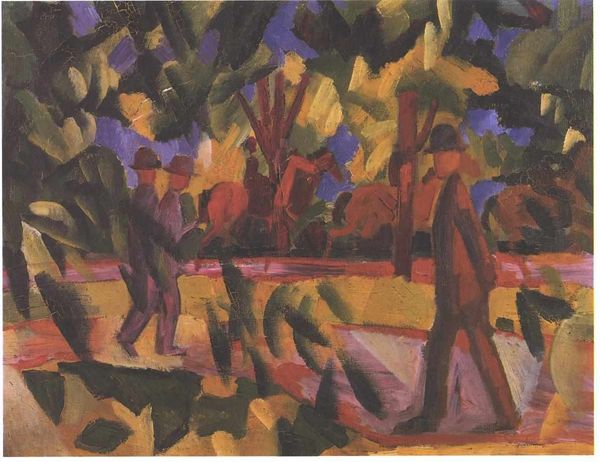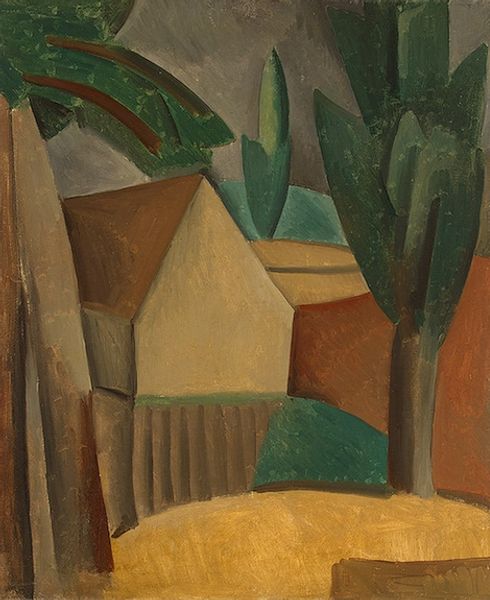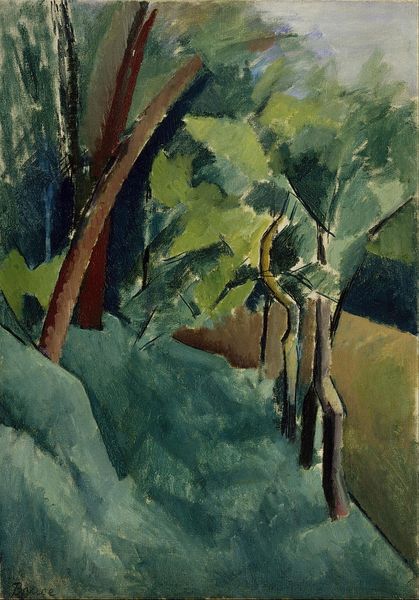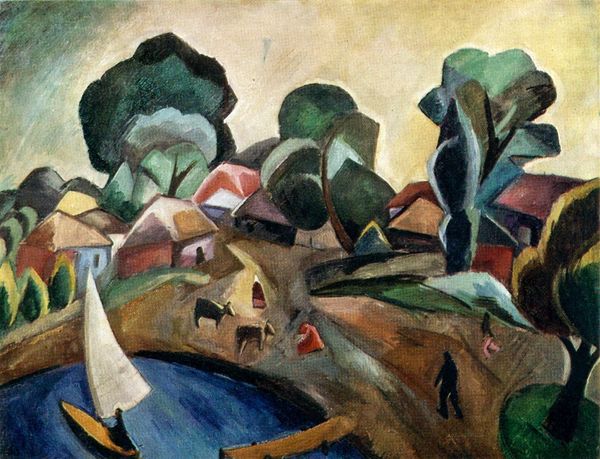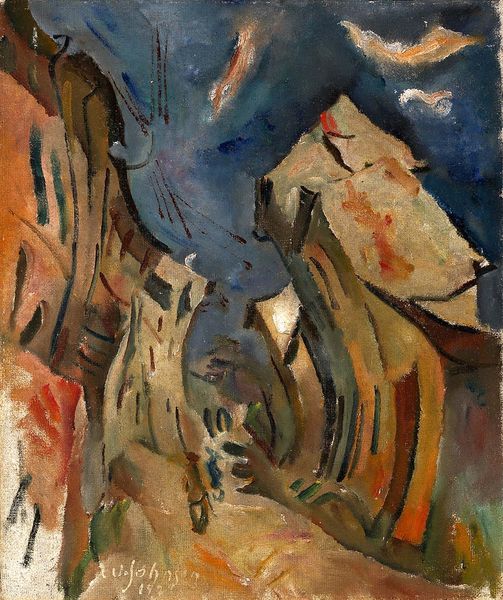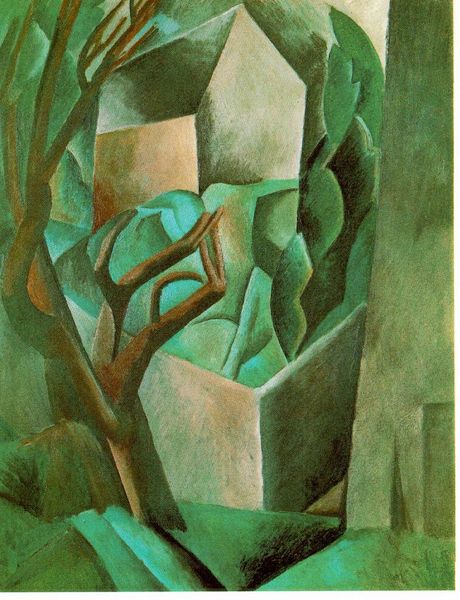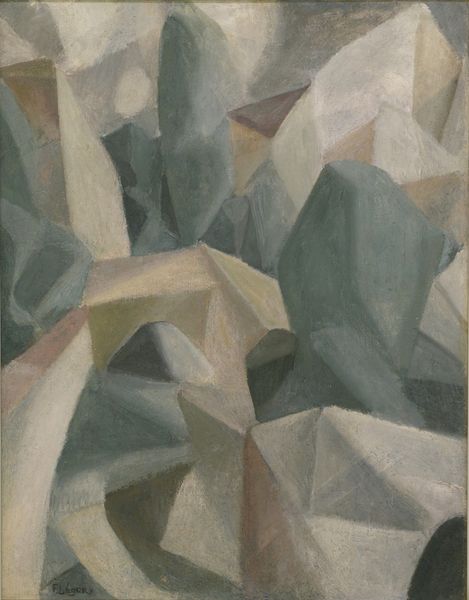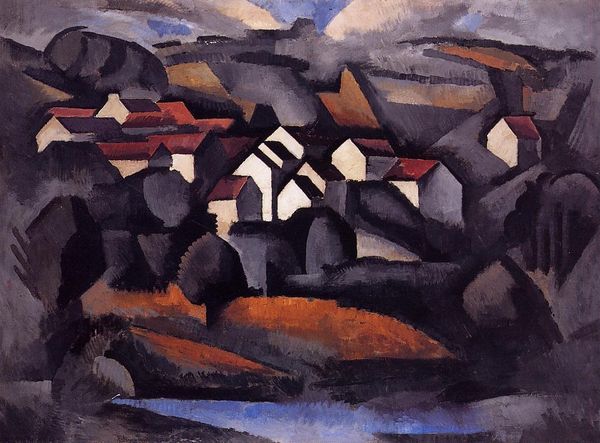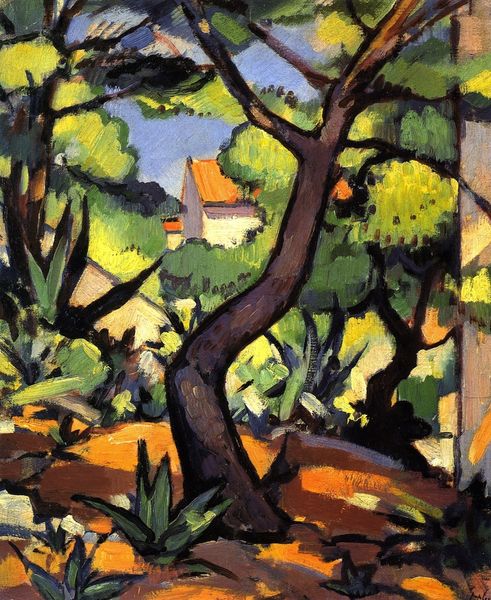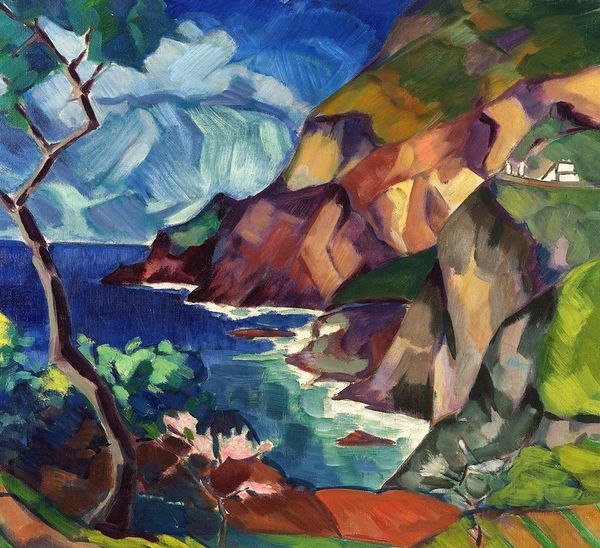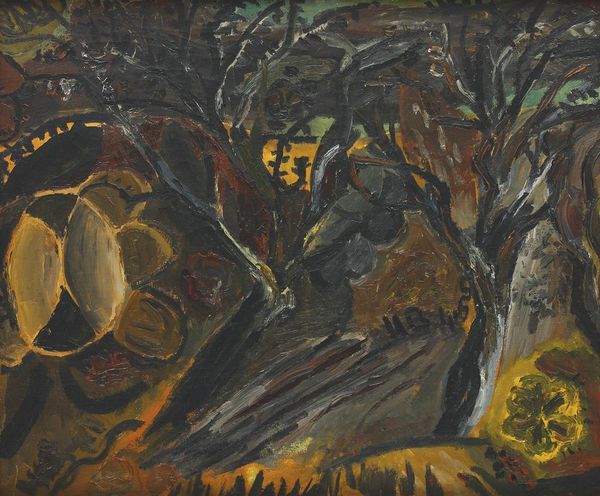
painting, oil-paint
#
cubism
#
abstract painting
#
painting
#
oil-paint
#
landscape
#
oil painting
#
abstraction
#
expressionist
Dimensions: 60 x 73 cm
Copyright: Public domain US
Editor: Here we have Picasso’s "Paysage aux deux figures," created in 1908. It’s an oil painting, and I’m struck by how he abstracts the landscape. It almost feels like looking at a fragmented memory. What’s your interpretation of this piece, especially considering its place within Picasso’s broader career? Curator: This work is fascinating when placed in the context of the rise of modern art and the institutional shifts occurring then. It signals a radical departure from traditional landscape painting. We see Picasso wrestling with representing not just what he sees, but also what he knows is there – that fracturing of form you observed. Editor: So, you’re saying it’s less about a literal landscape and more about… shifting perspectives, almost challenging the viewer's perception of reality? Curator: Exactly. Consider how the burgeoning art market and galleries like Kahnweiler’s were embracing these experimental works. This shift empowered artists to challenge established academic conventions and explore abstraction. The landscape becomes a site for intellectual inquiry. Does that reading affect how you feel about the painting? Editor: It does. I was initially drawn to the colours and shapes, but understanding the cultural context gives it more depth, almost as if Picasso isn't just painting a landscape, but challenging the entire notion of representation itself. It sounds pretentious, but can we see this artwork as a social statement about reality and vision, translated via art? Curator: It's not pretentious at all. Your reading fits perfectly within this era's shifting societal norms. Picasso was responding to a world undergoing rapid change, and the canvas became his arena for questioning established visual and societal orders. Editor: I see it in a new light now. Thank you! Curator: My pleasure! It’s crucial to recognize how these aesthetic choices aren’t made in a vacuum but rather in constant conversation with social and institutional forces.
Comments
No comments
Be the first to comment and join the conversation on the ultimate creative platform.
